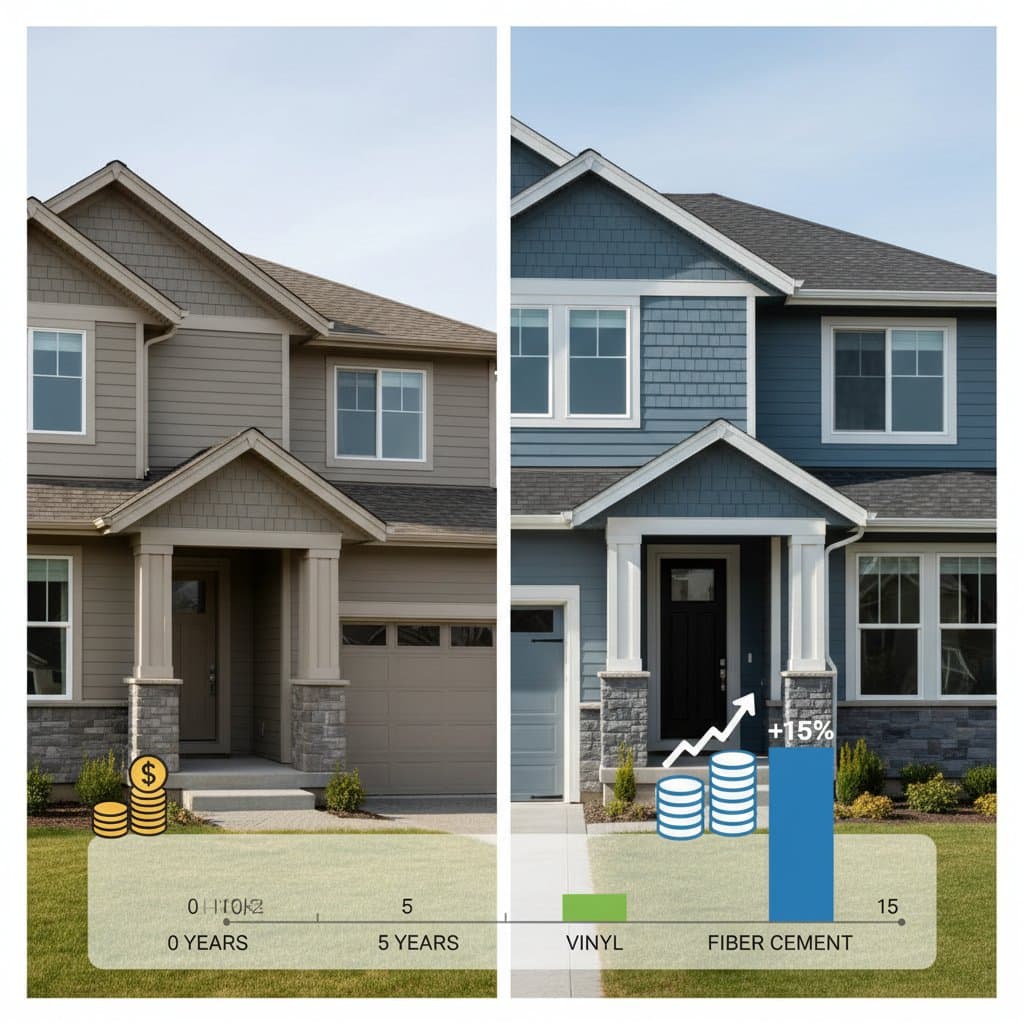Understanding the 15-Year ROI Advantage of Fiber Cement Siding
Homeowners often weigh initial costs against long-term benefits when selecting siding materials. Fiber cement siding stands out by offering a 15% higher return on investment over 15 years compared to vinyl alternatives. This edge stems from its exceptional durability, minimal maintenance needs beyond routine care, and enhanced curb appeal that elevates property values.
Installation costs for fiber cement typically range higher upfront, averaging 20% more than vinyl due to specialized labor and materials. However, these expenses diminish over time as fiber cement resists warping, cracking, and fading better than vinyl in harsh weather conditions. Resale analyses from real estate experts show homes with fiber cement fetch premiums of 5% to 10% in competitive markets, directly contributing to the superior ROI.
Vinyl siding appeals to budget-conscious buyers with its lower entry price and simple installation process. Yet, frequent repairs from sun damage or impact can erode those savings. Fiber cement, composed of cement, sand, and cellulose fibers, withstands pests, fire, and moisture, ensuring stability that translates to fewer unexpected costs.
Enhancing Curb Appeal and Marketability
Aesthetic choices significantly influence how well a home performs in online listings and open houses. Medium-toned body colors paired with lighter trim create a balanced look that photographs effectively under various lighting. Bright whites should be avoided in areas with intense sunlight, where glare reduces visual depth and makes surfaces appear washed out.
Focus on the front entry as a focal point by coordinating trim with subtle lighting fixtures. This approach adds visual weight and draws potential buyers' attention, boosting perceived value. Modern purchasers prioritize crisp seams and seamless transitions around windows and doors, elements where fiber cement excels with its precise edges and textured finish.
Homes featuring fiber cement often convey a premium, custom-built quality. The material's subtle depth contrasts with vinyl's smoother, more uniform appearance, which can seem basic in high-resolution photos. Properties that capture sharp, inviting images online tend to attract more inquiries and close sales quicker.
Key Tips for Visual Impact:
- Maintain straight lines across all panels to project precision.
- Select colors from a single family for cohesion, using subtle contrasts at entry points.
- Highlight architectural features like gables or soffits to emphasize texture.
Maintenance Strategies for Long-Term Performance
Effective upkeep extends the life of any siding beyond the 15-year benchmark. Both fiber cement and vinyl require regular attention, but their needs differ based on material properties. Vinyl benefits from straightforward cleaning, while fiber cement demands occasional inspections and protective coatings to preserve its integrity.
Develop a structured maintenance routine to catch issues early. Annual washing with a soft brush removes dirt and pollen without damaging surfaces. Inspect caulk lines around windows and doors to seal potential water entry points.
Every three to five years, address fiber cement specifically by touching up paint or applying sealant to edges exposed to weather. This prevents moisture absorption and maintains the finish's vibrancy. Vinyl, meanwhile, rarely needs repainting but may require panel replacements after severe impacts.
Comprehensive Maintenance Schedule:
- Annually: Clean siding gently and review caulking for gaps.
- Every 3-5 Years: Reapply sealant or paint to fiber cement; inspect vinyl for dents.
- Every 5 Years: Examine fasteners for rust and secure loose trim elements.
- Post-Storm: Verify panel alignment and tightness to avoid hidden damage.
Steer clear of high-pressure washers on vinyl, as they can drive water behind panels and cause mold. Fiber cement handles mild washing well, but allow full drying before any refinishing to avoid adhesion problems.
Selecting Reliable Contractors and Managing Bids
Choosing the right professional ensures a smooth installation that maximizes your siding's benefits. Begin by defining a detailed project scope, including surface preparation, material quantities, and site cleanup. This clarity helps contractors provide accurate estimates without hidden fees.
Solicit bids from at least three licensed specialists experienced in fiber cement applications. Require itemized breakdowns covering materials, trim work, waste disposal, house wrap barriers, and local permits. Compare not only prices but also labor warranties, which often extend 10 to 25 years for quality installations.
Look for certifications from manufacturers like James Hardie, a leader in fiber cement products. Verify references from recent projects similar in scale to yours. A reputable contractor will discuss ventilation needs and flashing details to prevent future moisture issues.
During the bidding process, ask about timelines and weather contingencies. Fiber cement installation prefers dry conditions to avoid warping during cutting and fastening. Solid bids reflect these factors, protecting your investment from delays or rework.
Maximizing Value Through Informed Ownership
Both siding options can endure well past 15 years with diligent care, but fiber cement edges ahead in versatility and prestige. It offers superior fire resistance, ideal for regions prone to wildfires, and a sophisticated appearance that aligns with upscale neighborhood standards. Vinyl suits rentals or short-term ownership with its low-effort profile.
Consider your timeline: If selling within five years, fiber cement's immediate appeal justifies the investment. For longer stays, its longevity offsets any repainting every decade. Local market trends also play a role; in coastal areas, fiber cement's mold resistance adds tangible value.
Ultimately, align your selection with lifestyle priorities. Budget constraints favor vinyl's simplicity, while aspirations for enduring quality point to fiber cement. Either way, proper installation and maintenance secure returns that enhance your home's equity and enjoyment.

